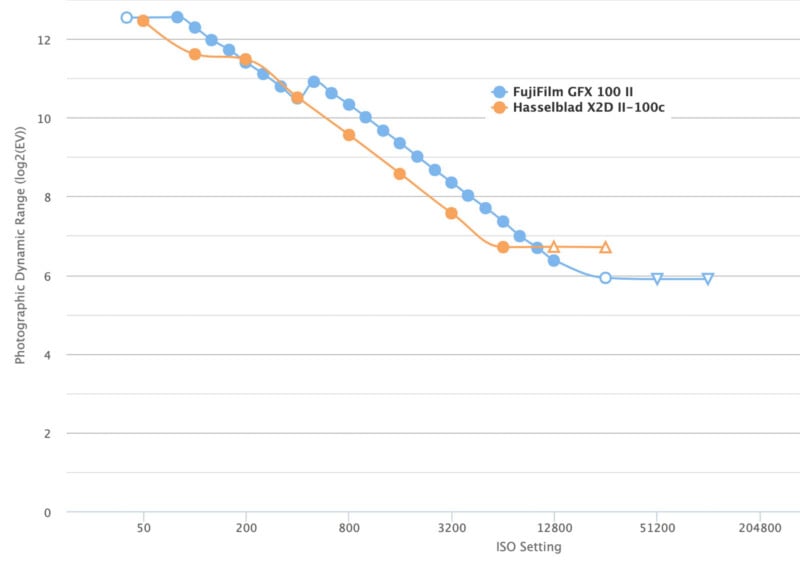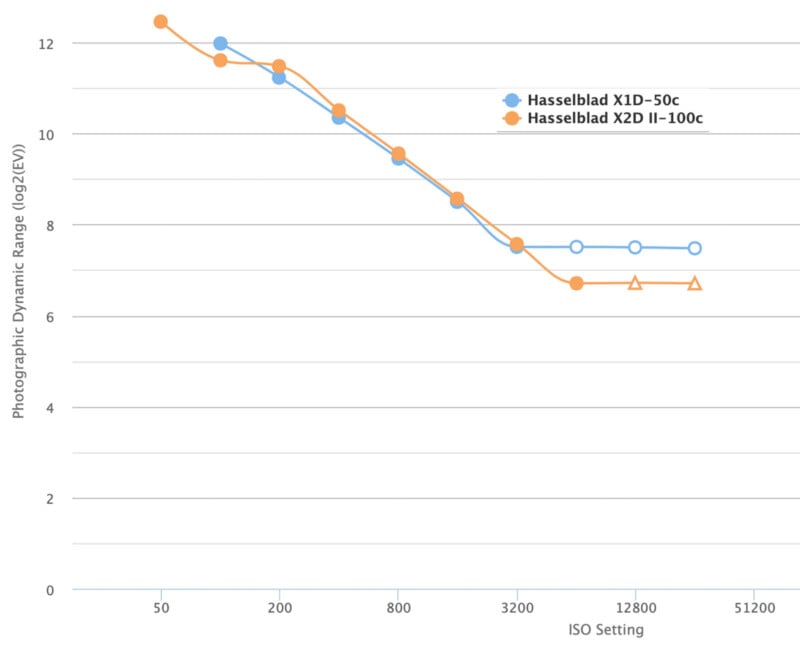Hasselblad X2D II 100C’s Dynamic Range Exemplifies Medium Format’s Biggest Advantage
![]()
The Hasselblad X2D II 100C is a fantastic new medium-format mirrorless camera. It introduces many compelling new features and breaks new ground not only for Hasselblad but for the medium-format photography space in general. It also nearly took the dynamic range crown away from the Fujifilm GFX100 II.
As spotted by Asobinet, the excellent William J. Claff of Photons to Photos added the X2D II 100C to his photographic dynamic range (PDR) charts this week, finding that Hasselblad’s latest camera delivers the goods.

The X2D II 100C peaks at a PDR of 12.46, barely trailing the Fujifilm GFX100 II at 12.55. At that point, it’s splitting hairs, but the GFX100 II does still retain its top spot in the category. Both Hasselblad and Fujifilm’s mirrorless medium format cameras trail the Phase One IQ3, Phase One IQ4, and Hasselblad H6D-100C cameras, but in fairness, those medium format cameras have larger 53 x 40mm image sensors, while the XD and GFX series cameras have 43.8 x 32.9mm sensors, which are still much larger than the 36 x 24mm chips inside full-frame cameras. As Chris Niccolls has said time and again, there is no replacement for displacement, so the bigger the sensor, the better the dynamic range, all else equal.

Aside from the a7R III in its Pixel Shift Multi Shooting mode, which has dubious practical applications, both the GFX100 II and X2D II 100C offer far and away better dynamic range than full-frame cameras, and the full-frame cameras that even get in the same ballpark, of which there are scant few, offer resolution nowhere near 100 megapixels.

As full-frame mirrorless cameras further prioritize speed and versatility, which are worthwhile endeavors to be sure, image quality has fallen by the wayside. Stacked and partially stacked sensors are very fast but incur varying degrees of dynamic range penalties. There is much more to a camera’s value than just its maximum dynamic range in optimal conditions, of course, but for some photographers, particularly landscape shooters, dynamic range is a key consideration. It’s little surprise then that landscape enthusiasts with ample budgets are buying medium-format systems at a considerable clip.
The Hasselblad X2D II 100C in particular has performed exceptionally well at retail, despite costing over $7,000 before even adding lenses, which are not cheap either. A big part of that is due to the camera’s image quality. The improved autofocus performance, refined design, and first-of-its-kind HDR imaging don’t hurt, either.
While full-frame and smaller camera systems prioritize speed and versatility, it’s good to see that medium-format cameras are all-in on image quality. Again, dynamic range is not everything, but it sure is something.